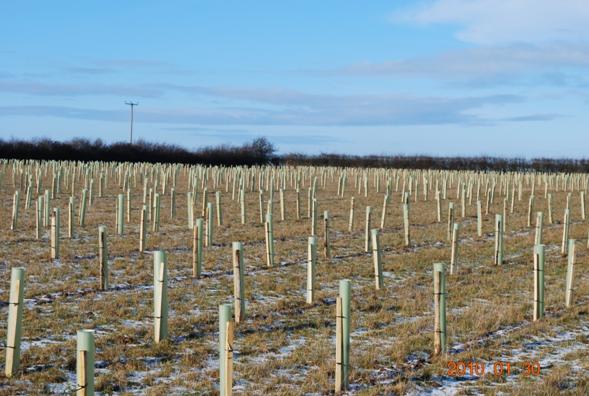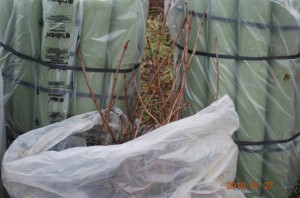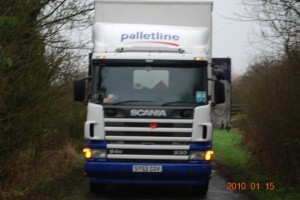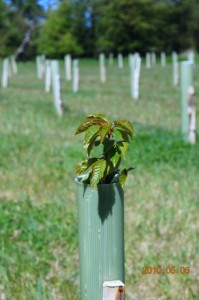If you didn’t see it in last months Newsletter, it is worth catching up on the 1st part of Robert and Dorothy’s fascinating account of the birth of Willoughby Wood.

Part II – The Labour Continues
Having bought the 10 acres of land with the half acre fishing pond in September 2009 we were keen to develop the site into Willoughby Wood at the optimum time for planting. We allowed enough time to draw up the plans, but once that was complete the severe frost and snow were upon us. The worst winter weather for years continued and we began to wonder how much of a delay there would be with establishing the trees, but then there was a respite which was long enough to begin the next phase of development. As mentioned earlier, we had employed the services of a forestry company as we felt this project warranted some expertise. If we were not happy with their advice we could pull out as no contract had been signed.
So it was that Mark met us to discuss our needs. He had been enthusiastic as he walked round the bare field, surveyed the area and took measurements. He asked us what we wanted and was able to transform the information into a planting plan. There were a few practicalities to consider. Running west to east were power cables on poles. These did not look out of place and were erected when electricity was brought to the village in 1956, but now they had to receive special attention so they would not create problems in the middle of the wood. We had already been aware of this, but used Mark’s expertise to create a more open area under the cables. We are still debating how to effectively use this area productively and are investigating using a seed mixture, often used as a game cover crop to increase the environmental benefit and attract a wider variety of birds.
The arrival of the planting plan was greeted with anticipation and excitement. Not only was there some proof of what was, to us, an ambitious scheme but we also heard that the Forestry Commission grants were likely to be approved. However, we would not start receiving any money until the new financial year.

Access to the new wood is on a bend in the single track road and over the river. As the stakes and guards would be delivered by an outside contractor we requested that an articulated lorry was not used. The lane is just too narrow and the gateway is at right angles from the narrow highway. An enormous lorry slid down the lane. As the driver was unable to negotiate the site, he parked the vehicle on the road. Fortunately there is not a lot of traffic but one or two locals had to be diverted. There was no way that the pallets containing the 4,500 split chestnut stakes and tree guards could be properly offloaded and they were dumped precariously by the single track carriageway but leaning heavily towards it. The road was extremely icy. A neighbour came to the rescue and shifted them to a place of safety before an accident happened.

We were unclear how long the practical task of planting the 4,500 trees would take and we were also concerned about the snowy and frosty weather and hoped this would not cause a delay. A window of milder weather enabled the forestry company to pull out all the stops when a thaw was forecast to be followed by milder conditions for a few days. And to our amazement all the trees were planted, tubed and staked within a week. What had been a grass field now took on a whole new feel. The plan became a reality. Not a mature wood, but the start of a project which will develop over the years.

At this point it seems appropriate to discuss the name. As we submitted the planting plan we were asked to give it a name. Several suggestions were made including Pringle Wood (from an ancient map), Brick & Tile Wood (after the pond) and Pipit Wood (attracting bird species). However we had already made our decision. It would be named Willoughby Wood in memory of Dorothy’s parents whose history in the village dated back at least 90 years, and whose mother had died a few months earlier. We felt it was a fitting tribute to a couple who loved the village and the countryside. There is another memorial on the edge of the planting. A very dear neighbour who had moved out of the village eighteen months earlier died after a short illness. She had a beautiful horse chestnut tree on the edge of her garden so we asked her family if we could plant one of the saplings in the wood in her memory. Fortunately the current occupants were more than happy for us to dig up a young tree and transplant it.